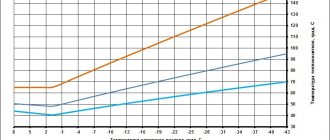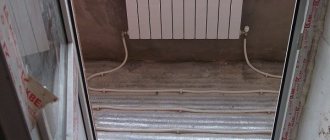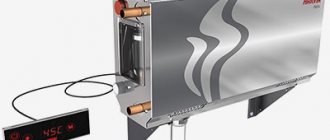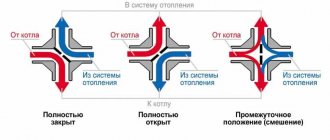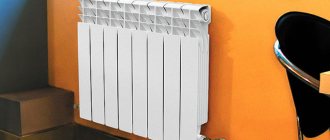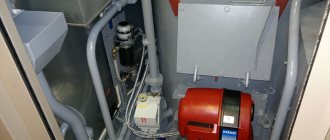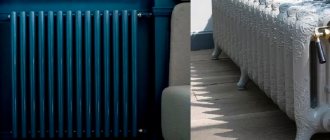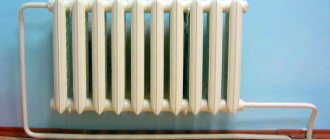Normative base
Ensuring optimal thermal conditions in a room is based on several regulatory documents. Here are the most important ones:
Attention! If you have any questions, you can chat for free with a lawyer at the bottom of the screen or call Moscow; Saint Petersburg; Free call for all of Russia.
- Federal Law dated 07.12.11 No. 416-FZ in Art. 7 (Chapter No. 3) fixes the general provisions of the rules on the basis of which the thermal regime in buildings is regulated.
- Government Resolution No. 354, adopted on 05/06/11. The “Rules for the Provision of Utility Services” approved by him fix the standards for the supply of thermal energy to owners and users of residential real estate and premises in apartment buildings.
Attention
Based on these documents, management companies are engaged in the acquisition of thermal energy and collecting fees from owners to pay for supplies. The provisions are disclosed in more detail in the agreement between the heat supplier and the management company, as well as in the internal instructions of the management company. However, they cannot contradict basic regulatory documents approved at the federal level.
Types of heating in residential buildings
There are many technical schemes designed to ensure optimal temperature conditions in the room. They differ in performance, efficiency, cost and design complexity, and ease of use.
In the most general form, all residential heating systems can be divided into three groups:
- Individual systems provide thermal conditions in one household. Most often, this option is implemented in private homes. For multi-apartment buildings in Russia, such a scheme is exotic, although it is used in some new buildings. Its main advantages are the ability to independently regulate the temperature in the room, finely adjusting to every change in the weather. The disadvantage is the high cost.
- Centralized systems receive heat with a coolant from the main line, and then distribute it among apartments. Most apartment buildings implement just such a scheme. Its advantages are efficiency and relatively low charges for thermal energy. However, it does not allow you to adjust the heat supply to a specific situation, which is why it can be cold in the apartment before the start of the heating season, and too hot when a sudden thaw occurs.
- Autonomous heat supply. In this case, the heat is distributed throughout all rooms of the apartment building, but the energy source is not the supply line from the thermal power plant, but an autonomous boiler house. In most cases, such systems are implemented for industrial buildings or social facilities (schools, hospitals, etc.). In terms of its advantages and disadvantages, this option occupies an intermediate position between the first two options.
But no matter what method is implemented, it must ensure that the temperature regime of the building complies with sanitary standards and regulatory documents in the field of heat supply.
Temperature in a corner apartment is standard
Temperature standards in residential premises are established in order to ensure comfortable conditions for human life during the cold season.
Heating in apartment buildings is provided by public utilities. Unfortunately, they do not always adhere to current legislation. If the standard temperature in the apartment is not observed, then its owner has the right to file a complaint with the relevant government service.
Standard temperature in residential premises
Today, the procedure and specifics of central heating are regulated by SanPiN documents. All necessary data is collected in Resolution No. 354 of 05/06/2011. If necessary, a person can go to court at any time if these norms and rules are not observed.
The standard temperature in an apartment according to SNIP is set as follows:
- Not less than 18˚С.
- In the corner room at least 20˚C.
- Temperature reduction by 3˚C at night is allowed.
Factors affecting the temperature in the apartment
The air temperature in a living room in winter is important. It is formed not only through the influence of heating devices. The following factors should also be taken into account:
- Climatic conditions of a particular region. The minimum temperature plays an important role.
- Season. The premises are heated not only in winter. The devices also work in spring and autumn. At the same time, temperature indicators during this period are different.
- Human factor or individual preferences.
- Materials that were used to build the house. Today, quite often an additional layer of insulation or waterproofing is used.
The permissible wall temperature in an apartment, according to current standards, should not be lower than 20° degrees. Otherwise, it will not be possible to create comfortable living conditions in the room. It is also affected by the weather and dew point.
Temperature standards in various rooms
The optimal temperature in an apartment is a subjective concept that depends on the individual preferences and habits of the owner. The sensations should not cause discomfort. Otherwise the person will feel bad.
Temperature indicators are considered acceptable if they comply with those established by current legislation:
• Any residential type premises - at least 18° C. • The room between two neighboring apartments - at least 16° C. • Kitchen - at least 18° C. • Toilet, bathroom - at least 18° C. • Entrance lobby or staircase cage - at least 14° C.
• Storage room - at least 12° C.
In our separate article, you can also find out the recommended indoor humidity standards. These standards also significantly affect a person’s comfortable perception of the indoor microclimate.
Ideal temperature in a child's room
Pediatric sources advise paying close attention to your baby’s temperature. Overheating or hypothermia can negatively affect its general condition. The temperature in the child's bedroom should be 18°-20° C. Thanks to this, all biochemical processes in his body will proceed normally.
Dr. E.O. Komarovsky warns that the increase is dangerous and can lead to disruptions.
However, it is necessary to increase the intensity of the heating system for a newborn who was born ahead of schedule. For its development, it is necessary to create certain conditions, which the pediatrician will tell parents in more detail.
Optimal temperature during the heating season
Residents of our country observe an increase in utility bills every year.
At such a moment of crisis, they are paying a significant part of the budget and want to know that they will be in comfortable conditions in the winter.
Unfortunately, public utilities do not always do their work conscientiously. That is why it is important to know what the temperature in the apartment should be during the heating season in the apartment.
The relationship between the owner of this service is regulated by GOST R 51617-2000. It specifies each period of the year and general technical conditions.
In winter, it is necessary to adhere to the range from 18° to 25° C.
If you deviate from the norm, it is difficult to imagine comfortable living in an apartment.
The importance of maintaining a comfortable temperature
To create comfortable conditions, it is recommended to keep the temperature at 22° C. An increase or decrease causes irreparable harm to the body.
The heat in the room creates a favorable environment for the growth and development of bacteria harmful to the human body. At the same time, normal temperature does not impair heart function. The heat thickens the blood and forces the internal organs to work intensively. Constant exposure leads to dehydration, which provokes nervous tension.
Hypothermia or hypothermia quite often acts as a trigger for the development of a cold. It is important that your body temperature does not fall below 36 degrees. Hypothermia is especially dangerous for children. Their body has little heat transfer, so it cannot recover quickly.
Rules for measuring room temperature
The rules for measuring air temperature are very important, because only if they are followed will it be possible to obtain the correct result. To perform the manipulation, you will need a regular mercury thermometer for internal use. It should be located away from heating appliances. The optimal solution is to place it suspended permanently.
Temperature measurements must be carried out by a registered device according to current regulations. Today there are many devices on the market that have a high level of accuracy.
It must be located at least 1.5 meters from the floor. In this case, there must also be at least 1 meter to the outer wall.
You can get an accurate result only if the thermometer remains in the selected position for at least 10 minutes.
Indoor climate control
The indoor microclimate is regulated not only by the heating system. Attention should also be paid to the following factors.
- Ventilation provides the necessary air exchange. Oxygen enters the room and carbon dioxide leaves. The latter factor negatively affects a person’s well-being and can cause severe headaches. An inlet valve can solve the problem. It will prevent warm air from escaping from the room. At the same time, oxygen flows in sufficient quantities.
- Central heating significantly reduces indoor air humidity. To eliminate the negative effect, it is recommended to purchase special devices. They periodically spray moisture into the environment.
- In the bathroom, hot tap water causes condensation to accumulate on the walls, which can lead to the formation of mold or mildew. Properly organized ventilation helps solve the situation. Experts advise installing a small hood.
Responsibility of utilities for violation of temperature standards
Violation of the temperature standard not only causes discomfort, but can also lead to exacerbation of a number of chronic diseases. If utility services did not check the functioning of the system in a timely manner, then residents of the house have the right to file a complaint. She initiates a review by regulatory authorities of the validity of this application.
The responsibility of utility services for violation of temperature standards comes down to the need to recalculate the cost of services already provided. Additionally, they are also required to correct all system faults. After completing the work, the microclimate of the room is re-checked. The result is recorded in a special act.
If irregularities have been identified in the central heating system, the apartment tenant has the right to claim a recalculation of the amount accrued to him in the amount of 0.15 per hour of use. Thanks to this, payments can be reduced by 90% within 28 days. However, to obtain such a decision, you will need to file a claim in court.
Building regulations
The design of the heating system of a residential building is carried out in accordance with regulatory documentation - GOSTs and SNiPs. The most important of them include:
- SNiP 2301-99. This document describes the temperature regime in premises for various purposes, which must be provided by the heating system.
- SNiP 4101-2003. The document regulates ventilation and heat supply to rooms depending on their purpose.`
- SNiP 2302-2003. Based on this document, thermal insulation of premises is created. Without this data, it is impossible to accurately calculate home heating standards.
- SNiP 4102-2003. This document contains the latest changes in the regulations for the organization of centralized heating.
For your information
, there are other standards that are applied taking into account the specific features of the heating supply of a building, for example, when installing a gas heating system. If the heating system of a residential building does not comply with regulatory documentation or cannot provide the required temperature conditions, the building cannot be used for its intended purpose; all disruptions in the operation of communications must be eliminated.
Requirements for heating industrial premises
At low temperatures, heating of production premises, as required by labor protection, should be carried out in cases where the time workers spend there exceeds 2 hours. The only exceptions are premises in which permanent presence of people is not necessary (for example, rarely visited warehouses). Also, structures are not heated, being inside of which is equivalent to carrying out work outside the building. However, even here it is necessary to provide for the presence of special devices for heating workers.
| Monday | Open 24 hours |
| Tuesday | Open 24 hours |
| Wednesday | Open 24 hours |
| Thursday | Open 24 hours Now open |
| Friday | Open 24 hours |
| Saturday | Open 24 hours |
| Sunday | Open 24 hours |
Occupational safety imposes a number of sanitary and hygienic requirements for heating industrial premises:
- heating indoor air to a comfortable temperature;
- the ability to regulate the temperature due to the amount of heat generated;
- inadmissibility of air pollution with harmful gases and unpleasant odors (especially for stove heating of industrial premises);
- the desirability of combining the heating process with ventilation;
- ensuring fire and explosion safety;
- reliability of the heating system during operation and ease of repair.
During non-working hours, the temperature in heated rooms may be reduced, but not below +5 °C. At the same time, industrial heating must have sufficient power to restore normal temperature conditions by the start of the work shift.
Heating standards in a residential building
A consumer of thermal energy, that is, a homeowner or a person permanently residing in this house, does not need to know all the intricacies of regulatory documentation and the rules for organizing a heating system. But everyone needs to have an idea of what thermal conditions the heating system of a residential building should provide. Here are the basic requirements and rules that apply to residential and utility premises:
- In living rooms, the temperature should be between +20-+22 degrees. A short-term deviation up or down is allowed, but fluctuations of more than 2 degrees are not allowed.
- The temperature in the kitchen and toilet should be 1 degree lower than in living rooms. It is allowed to increase it to +26 degrees, this is due to the use of a gas stove or other heating appliances in the kitchen. But the maximum permissible temperature drop is the same as in residential premises.
- In the bathroom, the temperature level should be higher and be within +24-+26 degrees.
- In corridors and staircases, where a person goes out in warm clothes, the temperature should be within +16-+18 degrees.
Additional information
As practice shows, it is the temperature regime of staircases and flights that is most poorly observed - this is due to high heat losses. However, such a violation will certainly lead to cold weather in the apartment, so residents have the right to file a complaint with the Criminal Code.
Connection diagrams according to SNiP
Before starting installation, regardless of where the installation is being carried out: in the kitchen, in living rooms, connecting batteries on the site between floors, or insulating the hallway - you should select the necessary connection diagram. Several options are presented for consideration.
Rules and regulations
Side connection
In most cases, a lateral connection is made, which helps achieve maximum heat transfer from heating batteries. This requires minimal expenditure on heating the room. The installation principle of the presented option is that the inlet pipe is connected to the upper branch pipe of the section, and the outlet pipe, respectively, to the lower branch pipe. When connected in this way, the pipes will be on one side of the heating radiator.
Diagonal connection
The indicated connection method is intended for attaching batteries that are long. In this case, the inlet pipe is connected to the upper pipe, and the outlet pipe is connected to the lower pipe, which is located on the opposite side of the radiator. As a result, maximum heating of the radiator is achieved along its entire length.
Distance from floor
Features of heating an apartment building
The heat supply system to an apartment building has a number of operating nuances:
- The user's inability to influence the degree of heating of the coolant. All a tenant can do is shut off or reduce the flow to a particular radiator.
- Difficulties with organizing the accounting of supplied heat. It requires installing IPU devices on 2-5 risers, which costs a significant amount for the family budget.
- The start and end dates of the heating season are set without taking into account the opinion of the consumer or natural conditions.
The resident often has to make a lot of effort to create an optimal microclimate. It is required to ensure good thermal insulation in the apartment, as well as to obtain from the management company to carry out similar work to eliminate heat loss in the entrance and stairwells.
Heating standards for corner apartments
Usually, as heating tariffs increase, people are equally dissatisfied with its quality.
Perhaps this is just a negative reaction to the new bills, or maybe the heating standards in an apartment in 2021 are far from perfect.
In this case, consumers should know their rights and demand a recalculation of payments for heat.
Parameters by which heating is turned on
As autumn sets in and the weather gets colder, residents of apartment buildings check their radiators every day in hopes that they have become hot. If this does not happen, then they begin to look for the culprits, although the standards for heating supply in an apartment building are prescribed in Resolution No. 354 of 2011.
So it states that heat supply to apartments begins provided that the air outside has cooled to +8 degrees and has remained at this level or below for at least 5 days in a row . In the event that the temperature either rises or falls to critical levels, the radiators will remain cold.
The heating is turned on only on the sixth day, and in most regions of the country this happens from October 15 and lasts until April 15.
Norm for an apartment
What temperature should the heating radiators of an apartment building be? It is useful to know that each room has its own heating standard in an apartment building (2017).
Heating standards in apartment buildings 2017:
- for a living room it is +18;
- Heating standards in corner apartments due to the presence of external cold walls are higher - +20 degrees;
- for the kitchen +18;
- bathroom – +25.
This applies to apartments, while for common premises the indicators are as follows:
- at the entrance - +16;
- for an elevator it is +5 degrees;
- in the basement and attic - +4.
All measurements in the apartment must be carried out along the internal wall of the room at least 1 m from the nearest external wall and 1.5 m from the floor. If the obtained parameters do not comply with the standards, then they should be presented to the heating network management. In this case, payment may be reduced by 0.15% for each hour of deviation.
Minimum indicator
It happens that even when the heating is turned on, there is still not enough heat in the apartment. This happens if the standard temperature of the heating radiators in the apartment does not correspond to the real one.
As a rule, this happens for several reasons, the most popular of which is airiness in the system.
To eliminate it, you can call a specialist or handle it yourself using a Mayevsky crane.
If the culprit is the unsuitability of batteries or pipes, then you cannot do without specialists. In any case, the period when the heating system was not working and the temperature of the radiators in the apartment did not meet the standards according to GOST standards should not be paid by the consumer.
Unfortunately, there is no minimum temperature standard for heating radiators in an apartment , so you have to navigate by the air temperature in the room. What heating temperature should be in the apartment? Heating standards for an apartment in an apartment building should vary from +16 to +25 degrees.
In order to document that the temperature of the heating pipes in the apartment does not correspond to the norm, you need to invite a representative of the organization that provides heat to the house.
Maximum indicator
Heating parameters in an apartment building are described in some detail in SNiP 41-01 of 2003:
- If the building uses a two-pipe heating structure, then the maximum permissible radiator temperature is +95 degrees .
- For a single-pipe system, the temperature of the heating pipes in the apartment is +115.
- The optimal temperature of heating radiators in an apartment (the norm in winter) is +80-90 degrees. If it approaches +100 °C, urgent measures are needed to prevent the coolant from boiling in the system.
Although radiator manufacturers indicate on their products the maximum temperature threshold is quite high, you should not reach it too often, as this can lead to their failure.
To make sure that the heating standards in the apartment in winter correspond to the guests, you need to measure the temperature of the radiators.
For this:
- You can use a regular medical thermometer, but keep in mind that you will need to add a couple of degrees to its result.
- Use an infrared thermometer.
- If you only have an alcohol thermometer at hand, then you need to tape it tightly to the radiator, after wrapping it in heat-insulating material.
If the temperature does not coincide with the norm, then you need to write a request to the heating network office to carry out a control measurement. Based on this request, a commission must come and make all the calculations.
What to do if there is no heating?
In the event that GOST for heating in an apartment is far from its norm, it is necessary to determine the cause of cold radiators. To do this, it is better to call representatives of the relevant service , since they can simultaneously record the temperature in living quarters.
If the problem is poor quality maintenance of the home heating system by heating network workers, then all the burden of troubleshooting will fall on the organization. At the same time, residents of the house must either be recalculated for heating if the radiators do not heat enough, or record the period when they were completely cold and be exempt from payment.
Thus, the law on heating of apartment buildings (2017) guarantees residents protection if utility services fail to comply with their duties .
Any application from them must be considered as soon as possible, after which a special commission comes and documents the discrepancies.
Heat calculation rules
To determine the amount of heat supplied, three different formulas are used; they are presented in Appendix of Resolution No. 354. They are used for the following cases:
- There are no metering devices in the building (there is neither a general nor an individual heat consumption meter), and they cannot be installed due to the design features of the heating system or other objective reasons. The formula is as follows: Pi = Si x NT x Tt , where Pi is the fee, Si is the housing area, NT is the established standard for thermal energy consumption, and Tt is the accepted tariff. For example, if the housing has an area of 45 sq. meters, the region has adopted a standard of 0.018 gigacalories per 1 sq. m., and the tariff is 1950 rubles per 1 gigacalorie, the owner will have to pay 1579.50 rubles if only the period of operating heating is paid.
- A common meter (GPU) is installed in the house, but individual metering devices are missing or not installed in all rooms. The formula is as follows: where Vd is the reading of the general building meter, Si is the area of a specific apartment, Sob is the total area of premises in the building, and TT is the current tariff. For example, if a common household device counts 170 gigacalories per month, the area of an apartment is 45 sq.m., the total area of premises in an apartment building is 7100 sq.m., and the regional tariff is 1950 rubles per gigacalorie, then after calculation using the formula the owner will have to pay 2101, 06 rubles. Heat calculations are taken into account only for the heating season.
- The house has both OPU and IPU installed. The calculation formula is as follows: . It contains Vin - the readings of individual or general metering devices, - heat costs for general house needs, - the area of the apartment, - the total area of the premises, - the established tariff.
Using the last formula, the calculation will be carried out as follows. For example, an apartment meter for a month of heating showed 1.2 Gkl, a common building meter - 65 Gkl, all the heating units in the house showed a total of 53 Gkl. 65 – 53 = 12 Gkl – consumption for general house needs. The total area of premises in the house is 6000 sq.m., the area of the apartment is 62 sq.m. In the region, the tariff is 1600 rubles. for 1 Gkl. After calculating using the formula, it turns out that in just one month of the heating season, the apartment owner will pay 2118.40 rubles.
The management company is required to measure the supplied heat energy monthly using installed meters. But the energy supplier determines the monthly payment once a year.
Requirements for heat supply systems
The legislation of the Russian Federation imposes sanitary, epidemiological and fire safety requirements for heating systems. For safety reasons, heating devices comply with SanPin and SNiP regulations.
We talked more about the rules for organizing heat supply in a separate article.
Hygienic
- no odor;
- uniform air distribution;
- no toxic emissions during operation;
- accessibility for repairs, cleaning and maintenance;
- absence of noise (what are the causes of noise in radiators?).
The temperature does not exceed 90 degrees. Systems heating above 75 degrees are equipped with protective guards. The concentration of chemicals in the air during operation of heat supply systems does not exceed the established safe exposure level.
Fire protection
Fire safety requirements for the construction and operation of heating systems in apartment buildings are regulated by SP 60.13330.2012. For safety reasons, hot water or steam is used as a coolant. In climatic regions with low temperatures, non-explosive substances are used to prevent the liquid from freezing.
This is important to know: How to sell an apartment with housing and communal services debts
In apartment buildings with a height of more than 9 floors, the installation of heat generators operating on gaseous fuel is allowed. Gas supply systems are equipped with automatic systems that shut off the supply of fuel in emergency situations. According to the standards, heat generators are installed in apartments that produce no more than 35 kW of heat. The total heating output does not exceed 100 kW.
Heating payment rules
Clause 42.1 of Resolution No. 354 offers two ways to pay for thermal energy:
- During the period when the heating is on.
- All year round, throughout the year.
At the same time, the choice of payment method or changing one method to another is the prerogative of the government authority in the constituent entity of the Russian Federation. Neither local governments, nor a collective meeting of residents, nor the management company can, by their own decision, change the payment calculation system.
For your information
The decision to change the method can be made only once a year, until the first of October. If a decision has been made to introduce year-round payment, it comes into force on July 1 of the following year. If it was decided to charge a fee at the beginning of the heating season, the effective date of the decision coincides with the start date of the heating season next year.
Actions in case of non-compliance with heating standards
What to do if the apartment is too cold or too hot? If there is a clear deviation of temperatures from the optimal temperature regime, the tenant can independently or together with neighbors invite management workers to take measurements. The management company must respond to every request from residents, taking measurements upon request.
Attention
If contacting the management company did not produce the desired effect and did not lead to an improvement in the situation, the consumer should file complaints with the local housing inspection authorities and Rospotrebnadzor. The last step in the fight for comfortable living conditions is to file a lawsuit against the management company.
Comments Showing 1 of 1
- Vesely Vladimir Vladimirovich 13:52 06/23/2020
The management company entered into an agreement with an intermediate agent to control the supply of coolant; the heating circuit does not comply with regulatory documentation and does not provide the required heat standard.Answer
